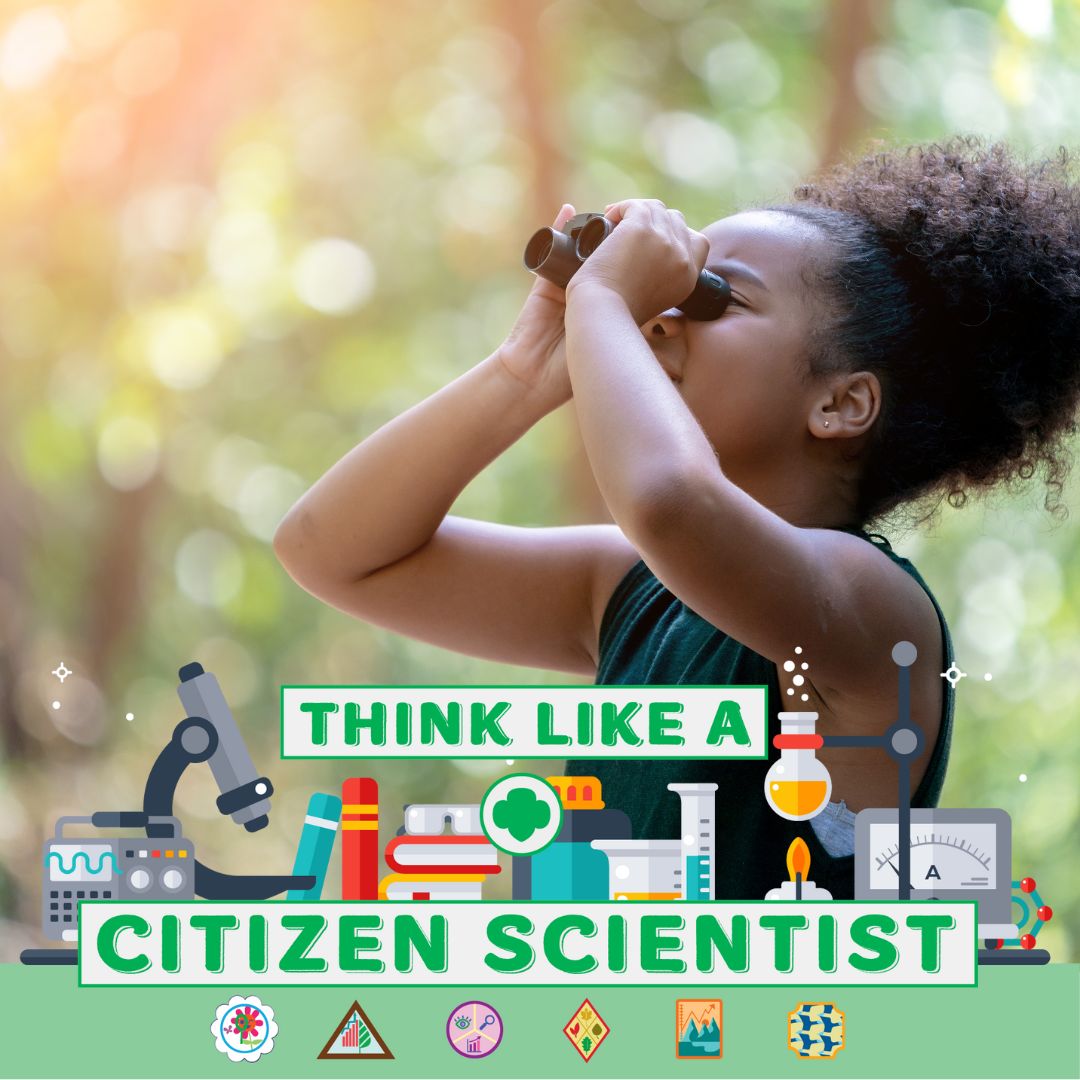
Our research team recently published a study highlighting how partnerships between SciStarter and facilitator organizations like the Girl Scouts of the USA provide a supportive context for extending learning and action associated with participation in citizen science. One of the most inspiring findings of this study was that the vast majority of girls participating in the program (81%) took local action on topics related to science and the environment. Although citizen science has occasionally been known to inspire environmental or civic action among participants, this type of impact is often elusive to citizen science project managers.
As part of the “Think Like a Citizen Scientist” Journey, girls completed Take Action Projects in their community. These projects took many shapes, including a group of “Junior” girl scouts (grades 4-5) sharing tips for minimizing light pollution with their local home-owners association and community center, a multi-age troop working with their parks commissioner and ranger to improve pollinator habitat at a local park, and a Daisy girl scout joining a local Stream Team to take part in regular water quality monitoring.
Most of the Take Action Projects (66%) also involved efforts to educate and inspire others, meaning that the learning and impact supported by the Journey extended beyond just the girls who participated and reached their friends, family, and broader community. For example, many girl scout troops not only chose to participate in another citizen science project themselves, but connected others to SciStarter and encouraged them to participate as well.
The “Think Like a Citizen Scientist” Journey began in 2017 as a partnership between SciStarter and Girl Scouts of the USA. Although the Journey is now offered to Girl Scouts of all ages, it was initially piloted with girls in grades K-5 (Girl Scout “Daisies,” “Brownies,” and “Juniors”). The Journey involves 3 key steps:
- First, girls complete science learning activities, including practicing observation, data collection, and data interpretation;
- Next, with the help of an adult, girls select an environmental citizen science project from a list featured on a SciStarter webpage designed specifically for the Girl Scouts. These projects were thoughtfully selected with the help of SciStarter to be age-appropriate and meet certain criteria from the Girl Scouts (for example taking place outdoors and requiring minimal specialized materials);
- Finally, girls complete a Take Action Project to create a sustainable solution to a problem they identified in their community.
After completing all 3 activities, girls earn both the Think Like a Citizen Scientist badge and a Take Action badge.
For this study, our research team examined summaries of girls’ Journeys and Take Action Projects provided by troop leaders between 2017 and 2020. From descriptions of over 200 completed Journeys, we were able to identify evidence of a wide range of learning outcomes from participating girls. These included science learning outcomes often associated with citizen science participation (for example learning about science content and the scientific process), as well as outcomes guided by the Girl Scout STEM (Science, Technology, Engineering, and Math) Leadership goals. The STEM Leadership Goals include girls developing interest in STEM, STEM competence and confidence, and understanding the value of STEM to society. By completing a Take Action Project, girls also achieved non-STEM Girl Scout Leadership Goals including identifying and solving problems in their community and displaying positive values.
Many other organizations like schools, museums, libraries, and more may also have the programming capacity and curriculum development expertise to support programs like this, especially through the use of tools such as those provided by SciStarter. The Think Like a Citizen Scientist partnership serves as an excellent model for other organizations hoping to get people involved in citizen science to promote scientific research, science learning, community action, and more. To find out more about how SciStarter can help connect your organization with citizen science projects and additional programming that fits your needs, email info@SciStarter.org .
The partnership between SciStarter and Girl Scouts also continues to grow in supporting activities like the Girl Scout Climate Challenge and Girl Scout Tree Promise, as well as continuing the Think Like a Citizen Scientist Journey. Interested girls and troop leaders can find out more about these activities at: https://scistarter.org/girlscouts-info
Haley E. Smith is the lead author on the recent paper “Facilitator organizations enhance learning and action through citizen science: a case study of Girl Scouts’ Think Like a Citizen Scientist journey on SciStarter.” Haley is a PhD candidate in the Department of Forestry and Environmental Resources at NC State University in Raleigh, NC. As an environmental social scientist, her current research focuses on citizen science participation patterns, experiences, and outcomes. Before starting her PhD, Haley completed her M.S. in Conservation Leadership at Colorado State University, where she worked with the Big Thompson Watershed Coalition to develop a community river monitoring and stewardship program.

